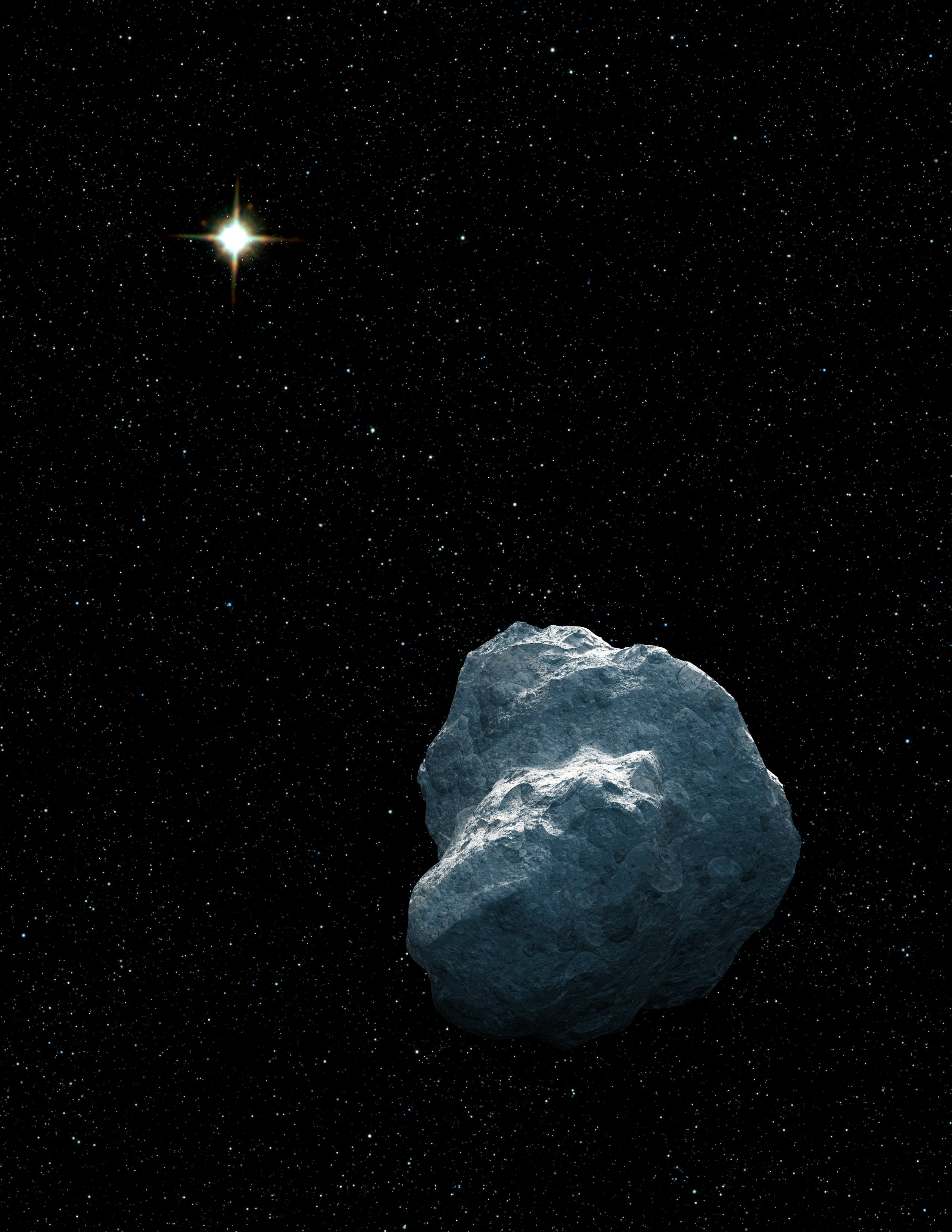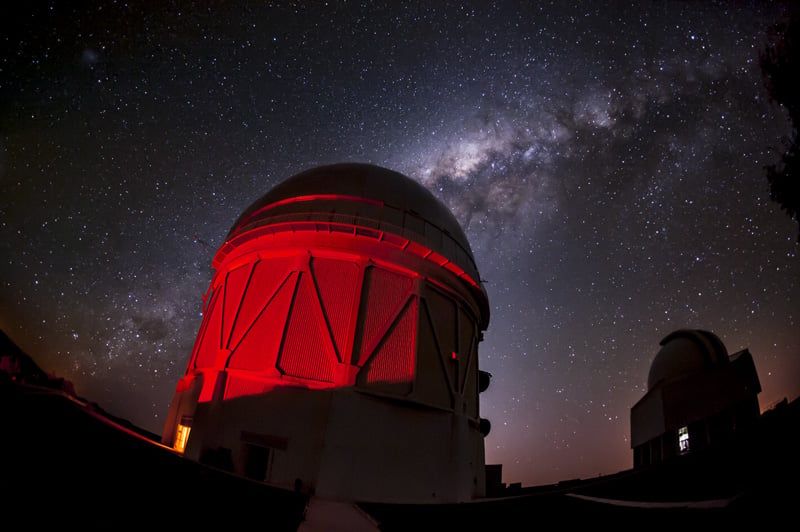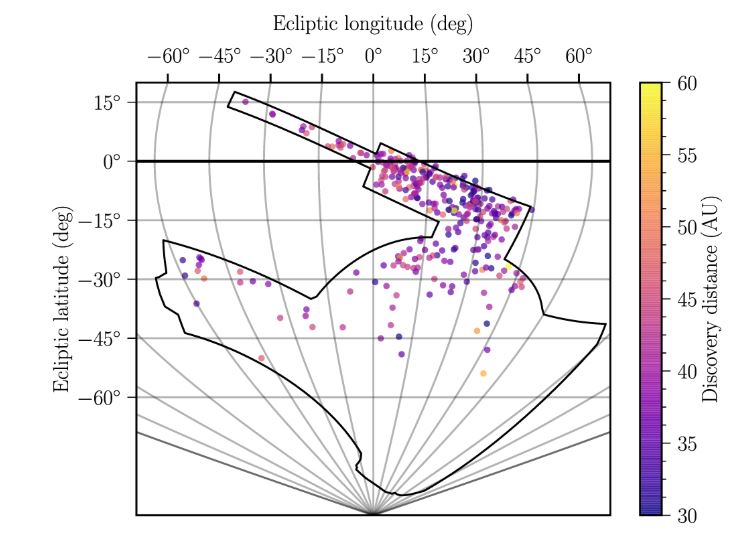Hey Pluto, Sedna, Haumea, Makemake Et al.: You've got company!
While searching for distant galaxies and supernovae, the Dark Energy Survey’s powerful 570-megapixel digital camera spotted a few other moving "dots" in its field of view. Turns out, the DES has found more than 100 previously unknown trans-Neptunian objects (TNOs), minor planets located in Kuiper Belt of our Solar System.
A new paper describes how the researchers connected the moving dots to find the new TNOs, and also says this new approach could help look for the hypothetical Planet Nine and other undiscovered worlds.
Guess you never know what you'll find once you start looking!
The Dark Energy Survey (DES) is designed to probe the origin of the accelerating universe and help uncover the nature of dark energy by measuring the 14-billion-year history of cosmic expansion with high precision. It studies galaxies and supernovas and precisely tracks their movements. This survey has been active since 2013, using the 4-meter Blanco Telescope located at Cerro Tololo Inter-American Observatory (CTIO) in Chile. The telescope is outfitted with the Dark Energy Camera (DECam), one of the most powerful digital cameras ever.
While DES wasn't specifically designed with TNOs in mind, its wide field of view (about 14 of our Moons would fit in its focal plane) and its ability to track moving objects make it particularly adept at finding new things out beyond Neptune. It can measure movements in the field of view as frequently as every hour.
The DES team realized early on they were seeing TNOs in their datasets, and in 2015, with a little over 2 years of observations researchers on the team announced finding sixteen previously unknown outer solar system objects.
"The number of TNOs you can find depends on how much of the sky you look at and what's the faintest thing you can find," said graduate student Pedro Bernardinelli, who led the new study. He and professors Gary Bernstein and Masao Sako hunted through the first four years of data from DES.
They started with a dataset of 7 billion moving "dots" that were detected by software. Bernardinelli then removed any objects that were present on multiple nights—things like stars, galaxies, and supernova.
Eventually, they were able to bring the dataset down to about 400 possible candidates and then they worked to verify those objects.
"We have this list of candidates, and then we have to make sure that our candidates are actually real things," Bernardinelli said in a press release from the University of Pennsylvania.
To verify the 'dots' as actual TNOs, Bernardinelli developed a way to stack multiple images to create a sharper view, which helped confirm whether a detected object was a real TNO. They also verified that their method was able to spot known TNOs in the areas of the sky being studied and just to really test themselves, they found they could spot fake objects that were injected into the analysis.
After many months of work, the researchers whittled their findings down to 316 TNOs, which included 139 new objects that were not previously known. The team said that with only 3,000 objects currently known, this DES catalog represents 10% of all known TNOs.
The location of the newly found TNOs range from 30 to 90 AU (astronomical units), or 30 to 90 times Earth's distance from the Sun. Pluto is about 40 AU.
Bernardinelli said he will be using his methods to search for more TNOs in the subsequent two years' dataset from DES' six year observing run. (Each year's observing 'season' runs from August to February.) And he also hopes to use it with data from the new Vera C. Rubin Observatory, which will survey the entire southern sky, and has the ability to detect even fainter and more distant objects than DES. And who knows…. Maybe the speculated Planet Nine could be found using these new methods.
This new study reminds us of the time the DECam took an accidental photo of Comet Lovejoy in 2015. At that happy accident, one of the researchers said, "It reminds us that before we can look out beyond our Galaxy to the far reaches of the Universe, we need to watch out for celestial objects that are much closer to home!"
More info:
Paper: Trans-Neptunian Objects found in the first four years of the Dark Energy Survey
University of Pennsylvania press release
Dark Energy Survey
 Universe Today
Universe Today



